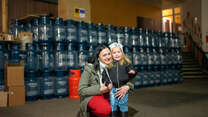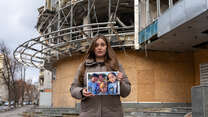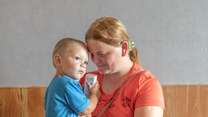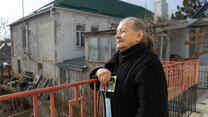Slideshow: The IRC's work in Kherson, Ukraine, funded by the European Union
In the early days of Russia's full-scale invasion of Ukraine, Kherson found itself under occupation for 8 long months. When Ukrainian forces regained control of the city on 11 November 2022, the world saw images of thousands of people, tears of joy in their eyes, wrapped in blue and yellow flags, welcoming Ukrainian soldiers on the streets of their hometown. Hope had returned to Kherson.
Today, 2 years after the start of the full-scale war and 15 months since the liberation of Kherson, the city’s new reality is much more grim. Almost daily shelling by Russian forces have turned significant parts of the once vibrant and thriving port city into ruins.
Tears of joy have turned into tears of pain from the constant loss of human life. But hope for a better tomorrow has not abandoned Kherson and its people.
Despite the near-catastrophic humanitarian situation, ruined infrastructure, lack of access to basic life-saving services, and the daily risk of death from drone or missile strikes, thousands of Kherson residents continue to live in their city.
To ease their daily hardships, the European Union, together with its partners, provides assistance to the residents of Kherson with food, drinking water, hygiene supplies, medicine, and a full range of critical humanitarian aid.
With the onset of winter, making sure the people of Kherson have heating is vital, as the city frequently faces interruptions to the central heating system. Hence, in collaboration with the International Rescue Committee (IRC), the European Union ensures local residents have access to special mobile gas heaters and regularly replenishes gas supplies.
Keeping hope alive feels more manageable when your children can sleep in warmth and comfort despite the many challenges around them.













